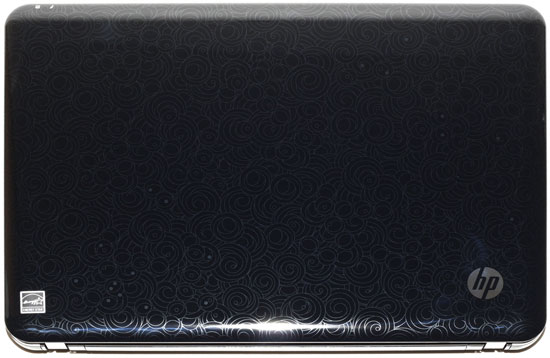ION for Netbooks — is it enough?
NVIDIA's ION platform for netbooks has a lot of interesting concepts. With the use of GPUs for more tasks — especially video decoding and editing — is it possible to pair a faster integrated GPU with an Atom processor and create a compelling system? Comparing the HP Mini 311 with other Atom-based netbooks, we would be inclined to answer in the affirmative. However, Atom netbooks aren't the only game in town.
We've dropped several references to Acer's Timeline series, and plenty of other vendors are launching similar CULV products. The Core 2 Duo SU9000 series is too expensive to compete in the same market, but the dual-core Celeron SU2000 and Pentium SU4000 chips aren't quite so expensive — in fact, the Celeron SU2300 is about half the cost of the Core 2 Duo SU9400. The loss of 2MB cache (3MB down to 1MB) and 200MHz will certainly reduced performance, but compared to Atom it should still be quite a bit faster. The question really comes down to how much you want to spend.

We really aren't too fond of the HP Mini 311 keyboard, touchpad, or LCD, and while the ION LE chipset certainly helps with video decoding, the same can be said for GMA 4500MHD. Modern games really aren't a viable option on either ION LE + N270 or CULV + 4500MHD, and older titles should work on both solutions. We wouldn't call either option perfect, but which is better?
We've begun testing of an Acer Timeline 1810, which is the same size as the Mini 311. The price of a Timeline 1810 starts at around $550, which is a full $150 more than the base Mini 311. However, that gets you Windows 7 Home Premium, 3GB RAM, a 320GB HDD, a Pentium SU4100 CPU, and around six to eight hours of battery life. Configure a Mini 311 with similar specs in the RAM, OS, and HDD areas and you're looking at $565 (without the external Blu-ray drive).
Similarly, we have the Acer Timeline's larger step-brother in the house, the Gateway EC5409u, priced at around $650. It includes 4GB RAM, a 15.6" LCD, and a DVDR. If you prefer a $400 price cap, consider the Gateway EC1435u we mentioned earlier. It has 2GB RAM, 160GB HDD, Win7, and a dual-core Celeron SU2300 (dual-core 1.2GHz, 1MB shared cache). Yes, even a Celeron SU2300 is still going to be a lot faster than Atom in terms of CPU performance.
We like the idea of NVIDIA's ION platform a lot more than we like the Intel Atom 945GSE platform, but we like CULV laptops even more. If we had to choose between the HP Mini 311 for $400 and the Acer Timeline 1810 at $550, it would be a tough decision even if the 311 had 3GB RAM and a 320GB HDD. Once we factor in the keyboard (we prefer the AS1810T), general performance, and battery life, the HP Mini 311 simply costs too much for what it offers. We'd also take the Gateway EC1425u as a great $400 alternative.
Looking towards the future, Intel's Pine Trail/Pineview should improve performance and battery life on Atom. What we don't know is how good the new IGP solution inside Pineview is going to be. Our understanding is that in 3D performance it will be similar to GMA 950 hardware, but it should also add the necessary features for DXVA and HD video decoding. We also know that ION won't be an option with Pineview, but vendors could still use other discrete NVIDIA GPUs (i.e. the G100M/G200M series). Unless Pineview really perks up in the CPU performance arena, though, solutions using CULV processors would continue to lead in many areas.
One of the best solutions we've seen of late is the ASUS UL80Vt, with GMA 4500MHD and the ability to enable/disable a GeForce G210M on the fly. Our full review is still coming, but consider this a recommendation if you have the $800 to spend. If all you have is $400 to $600, for the long battery life enthusiasts we recommend the Acer Timeline series (or similar products like the Gateway EC models). Those more interested in graphics performance at the expense of battery life can continue to turn to AMD CPU+IGP solutions like the Gateway NV52 with ATI HD 3200 — we've seen that particular notebook on sale for as little as $400 of late, which is a great deal considering we thought it was a decent notebook when it was selling for $500.
With so many other viable options, ultimately the HP Mini 311 is an interesting product that doesn't do enough to get our full attention. Last year the ASUS N10JC offered similar specs in many ways (albeit with a smaller LCD), and it garnered our Gold Editors' Choice award. A lot has changed in one year. Intel's Atom has always been about keeping costs low and reducing power requirements; spending $400 on any Atom netbook is tough to recommend, and the HP Mini 311 will usually cost closer to $500 once you add a few extras. The most likely buyer for the 311 is users that want a netbook with an external Blu-ray drive and software, in which case $630 for the Mini 311 is a fair deal. Ultimately it's not a bad netbook, but neither is it Editors' Choice material.










51 Comments
View All Comments
scott1202 - Wednesday, June 2, 2010 - link
This is a very good laptop also it looks very attractive and all the functions are easily performed.The screen is wide and the Mini 311 comes with a 6-cell battery standard I was surprised to find that despite the large high resolution screen, and Nvidia ION, the Mini 311 has some pretty good battery life. Some more Sources: http://www.laptopadapterac.com